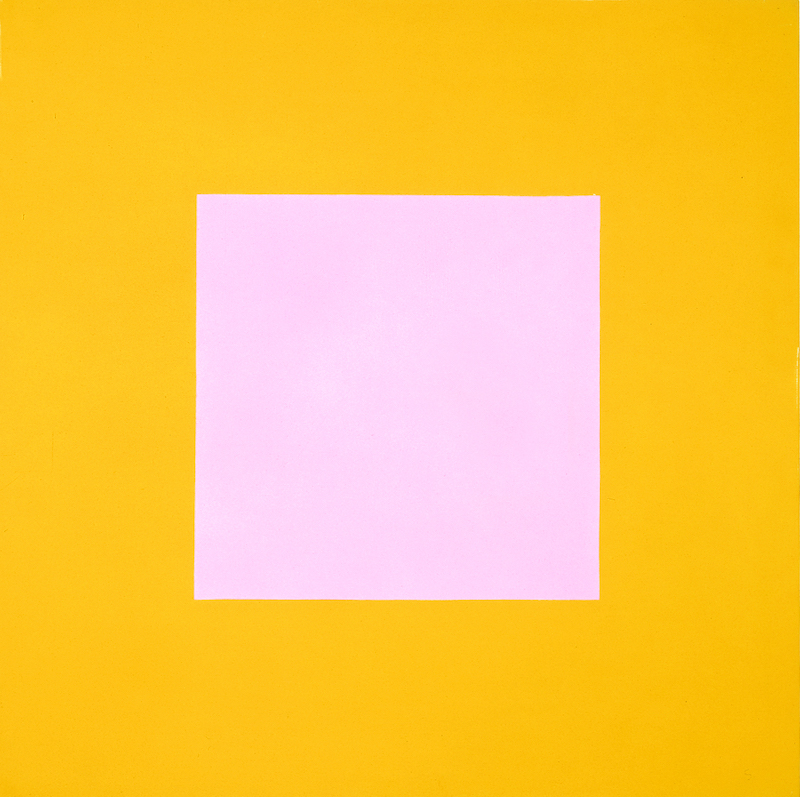
Ostie, 1975, Oil on canvas, 80 x 80 cm
Aurelie NEMOURS, 1910 – 2005 (Paris, France)
|
Aurelie Nemours was born in Paris in 1910, and died there in January 2005 at the age of 95. Orphaned at the age of 2, when she reached 9 years of age, she was sent to Notre Dame de la Tour, a religious institution where she developed her sensitivity for introspection, silence and meditation. It was during her teens that she declared her desire to become a painter. At 19, she enrolled at the Ecole du Louvre. Discovering Byzantine and Egyptian arts had a profound effect on her. She then joined Paul Colin's studio where she learned to draw and was able to work using live models. During the war, she studied with André Lhote who, she says, "taught her everything that could be conveyed through painting". Then in 1948, she joined Fernand Léger's studio. By 1951 at the end of her training, her work had turned decisively towards constructive abstraction. During the fifties, she had several prosperous encounters with the artistic avant-garde of the time. These included gallery owners, Colette Allendy (1953) and Denise René (1958) along with art writer, Michel Seuphor who introduced Aurelie Nemours to Mondrian’s work, a total revelation for her. There were more and more exhibitions in the decades that followed. Consecration came in the 1990s with several retrospectives in France and abroad. In 1994, Aurelie Nemours received the French grand national prize for painting and, in 2000, created an award herself. In 2001 and 2003, her loyal friendship with Gottfried Honegger (whom she met in 1962) encouraged her to make a donation to the French State as a complement to the Albers-Honegger donation. This was a set of paintings and a graphic arts fund which today, is in place at the Espace de l'Art Concret. Aurelie Nemours is a key figure of the concrete art movement. She entered into abstract art, experiencing this as an inner need and developing a visual language based around an asceticism of form and colour. Her works are meditative paintings which, through extreme reduction of colours and forms, visualize the ideas and laws that underlie appearances and trigger reflections of the universe's entirety and future. For Aurelie Nemours, painting meant "seeking the world's truth". Aurelie Nemours first paintings which she describes as Archaiques. were produced between 1947 and 1953. Based on observing the natural world, the artist reduces the appearance of elements to coloured surfaces. The composition then expresses itself through free forms and diagonal structures. Then came a series of pastels on paper entitled Demeures (1948-1960) which acknowledge the work of Saint Teresa of Avila, Les demeures de l’âme. In this series, Aurelie Nemours focuses her reflection on intersecting horizontal and vertical planes, forming a cross in compositions dominated by black and white. This visual vocabulary allowed the artist to conquer the void, creating the foundations of all her later work. Lines and surfaces are therefore emphasized and colours are presented as solids. The sign of the cross (in which no symbol should be seen) is tirelessly explored. Graphic or extended, single or multiple, stretched or drawn into the intersection which form the square. There are now 22 "familles" in Aurelie Nemours' work, a kind of series that the artist has more or less shown her devotion to over time. Partages, Echiquiers, Carrés Couronnes, Structure du silence, Rythme du millimètre, Nombre et hasard are some of the best known. From 1998, the artist began to develop her work in monochrome, displayed in the series, Polychromes, Quatuors, Lignes and Colonnes, playing on the juxtaposition of the paintings. Alongside her graphic work, Aurelie Nemours also developed as a literary writer and poet The piece, Ostie, is a square format canvas with 80 cm long sides, where a purple square is arranged centrally on a straw yellow background. This painting belongs to the artist's so-called romantic period where she radically simplifies the composition of her works seen through various sets of paintings. In 1970, she standardized her canvas formats and patterns, focusing on the square and reducing the number of colours used in the painting. The Carrés-Couronnes series, to which Ostie belongs, thus displays square shapes, that vary in numbers and are placed inside one another. The artist approaches colour from a vibratory aspect, making use of the complex blends it produces. Choosing the square, a simple, neutral, bottomless and topless form, limits colours from expanding, enabling it to gain in intensity. The artist plays with the background and form, aiming to synthesize the colour. This apparently simple composition unveils its complexity as the visitor observes it.
Crédit photo:
|